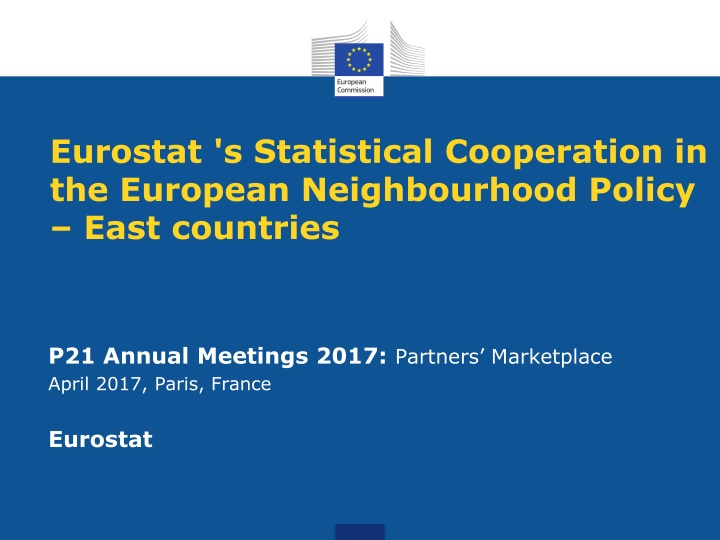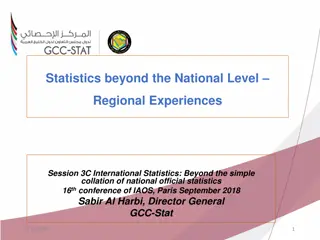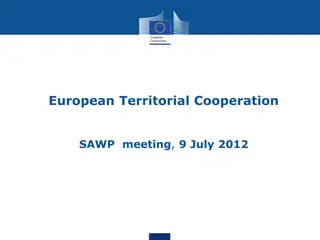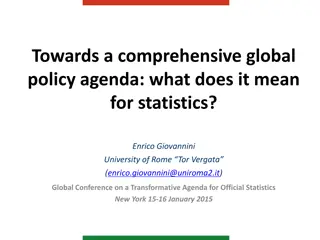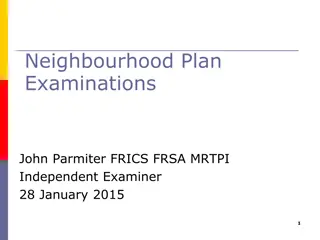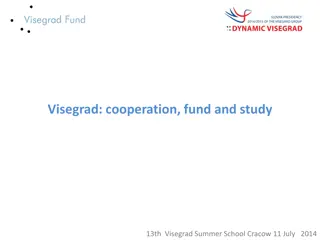Statistical Cooperation in the European Neighbourhood Policy - ENP-East
Statistical Cooperation in the ENP-East region aims to address challenges common to six countries through experience exchange and peer learning. The program enhances national statistical systems, promotes standards, and contributes to monitoring SDGs and the 2030 Agenda.
Download Presentation

Please find below an Image/Link to download the presentation.
The content on the website is provided AS IS for your information and personal use only. It may not be sold, licensed, or shared on other websites without obtaining consent from the author.If you encounter any issues during the download, it is possible that the publisher has removed the file from their server.
You are allowed to download the files provided on this website for personal or commercial use, subject to the condition that they are used lawfully. All files are the property of their respective owners.
The content on the website is provided AS IS for your information and personal use only. It may not be sold, licensed, or shared on other websites without obtaining consent from the author.
E N D
Presentation Transcript
Eurostat 's Statistical Cooperation in the European Neighbourhood Policy East countries P21 Annual Meetings 2017: Partners Marketplace April 2017, Paris, France Eurostat
What is the ENP - East? Basis: Strategy for Statistical Cooperation in the ENP-East Region 2014-2020 (developed together) Coverage: AR, AZ, BY, GE, MD, UA Addresses challenges common for these 6 countries Forum to exchange experience, create peer pressure, learn from each other Financing: European Commission/Eurostat Main aim: ENP-East regional programme (under discussion) 2 Eurostat
How does the ENP East work? 3 Eurostat
How does it contribute to monitoring SDGs and the 2030 Agenda? Short term: experts participation in international events, NSS assessment, information exchange, monitoring data availability, provision of expertise Medium term: enhance national statistical systems through cooperation & promotion of European and International standards. Longer term: efficient statistical systems will produce more comparable data 4 Eurostat
